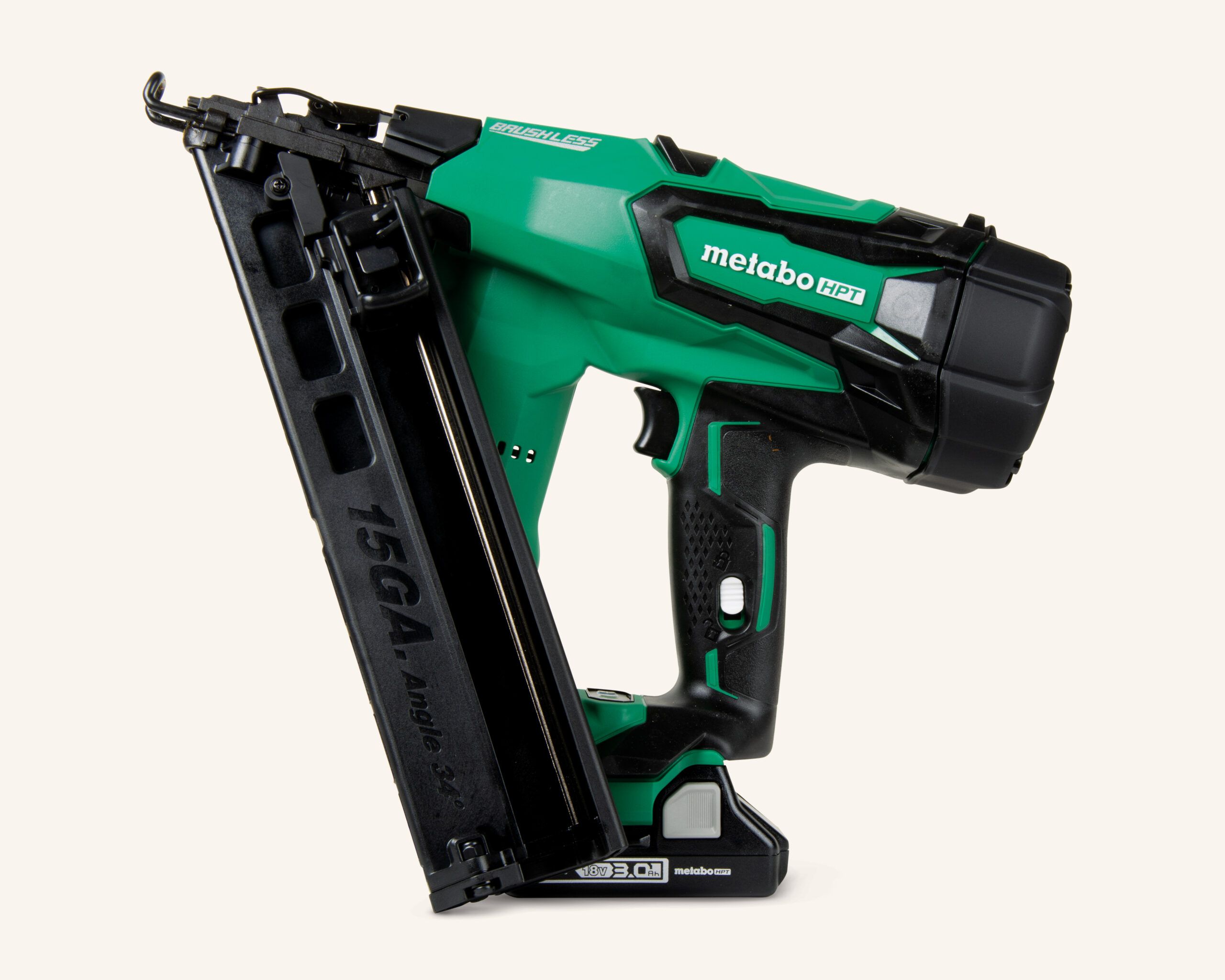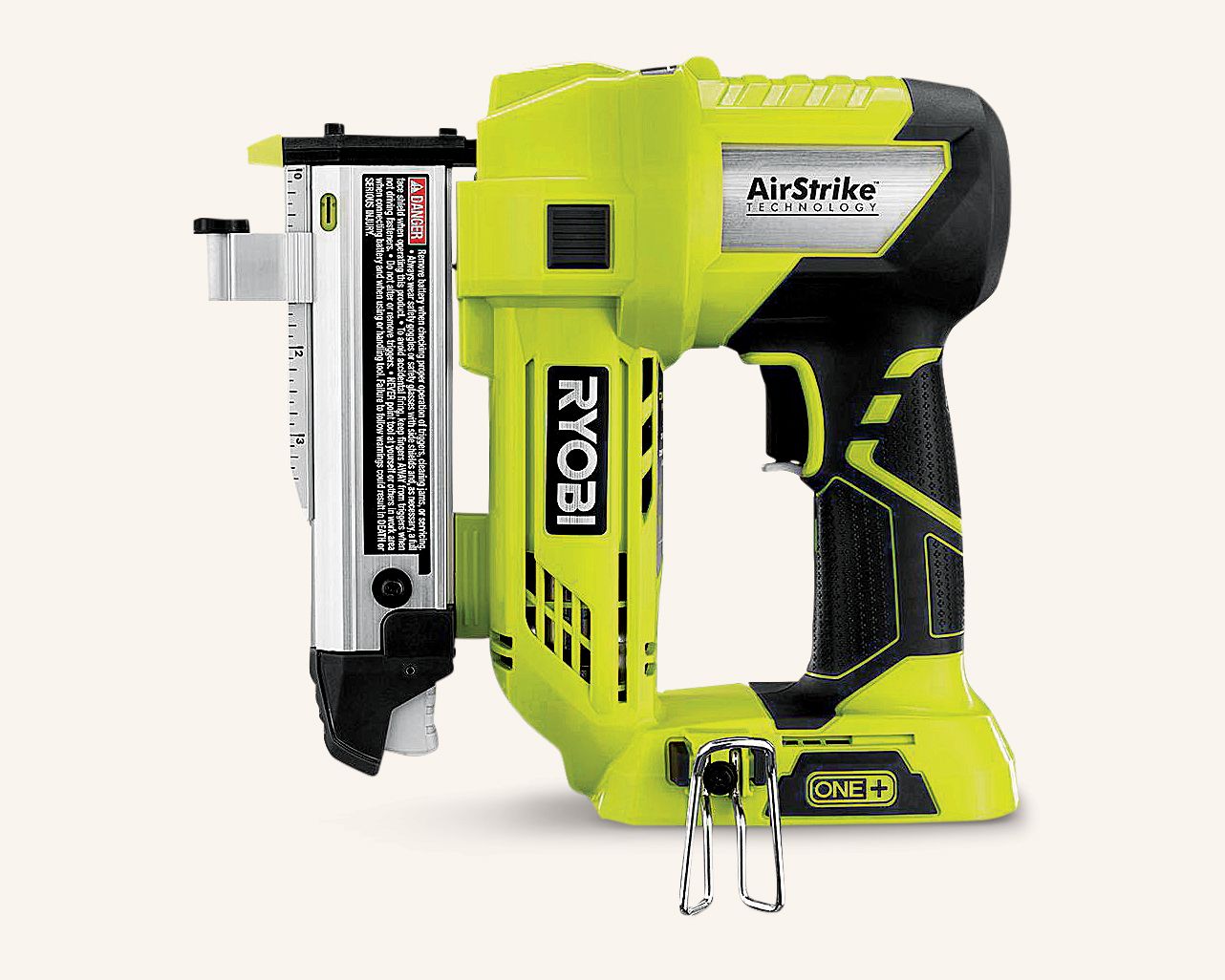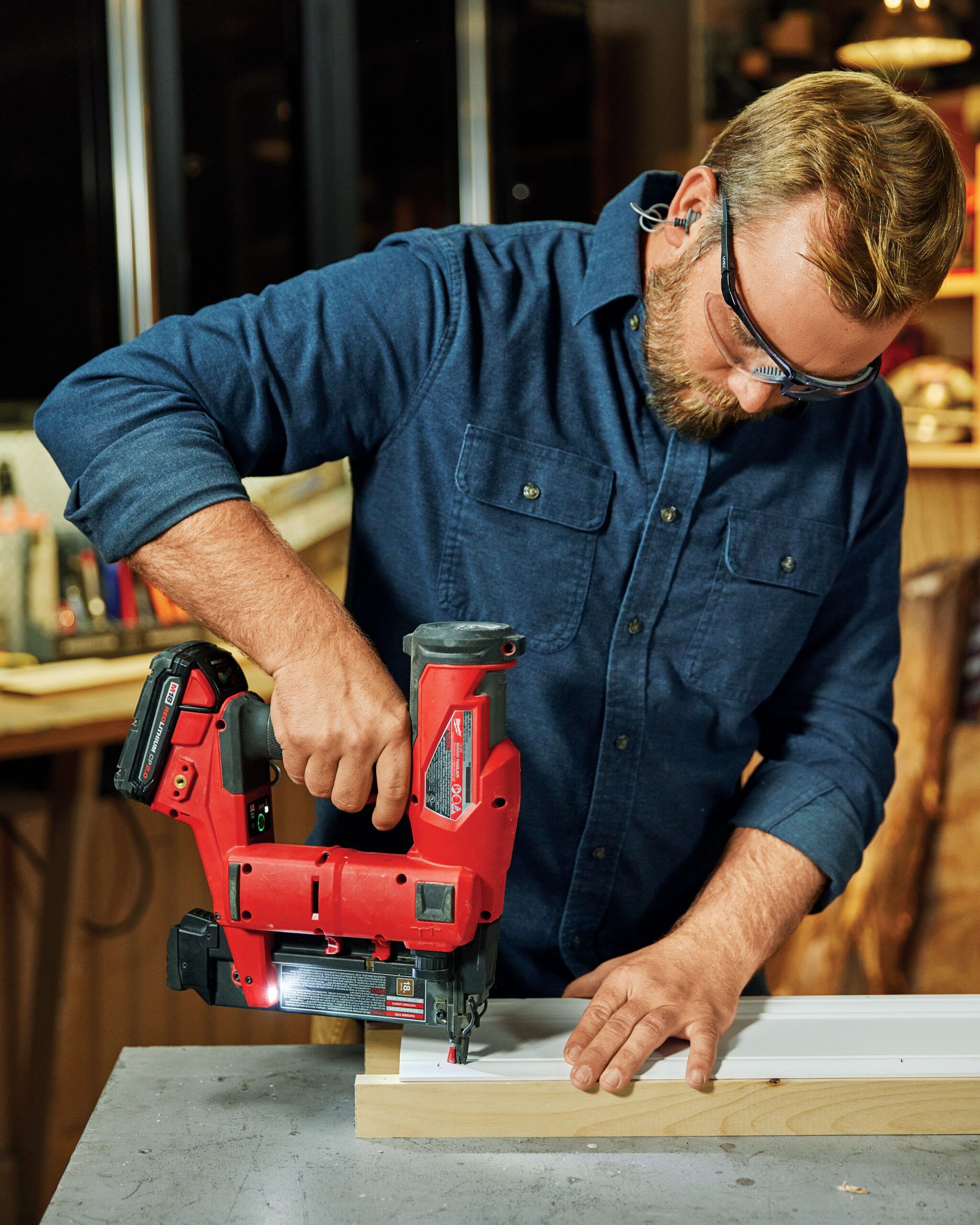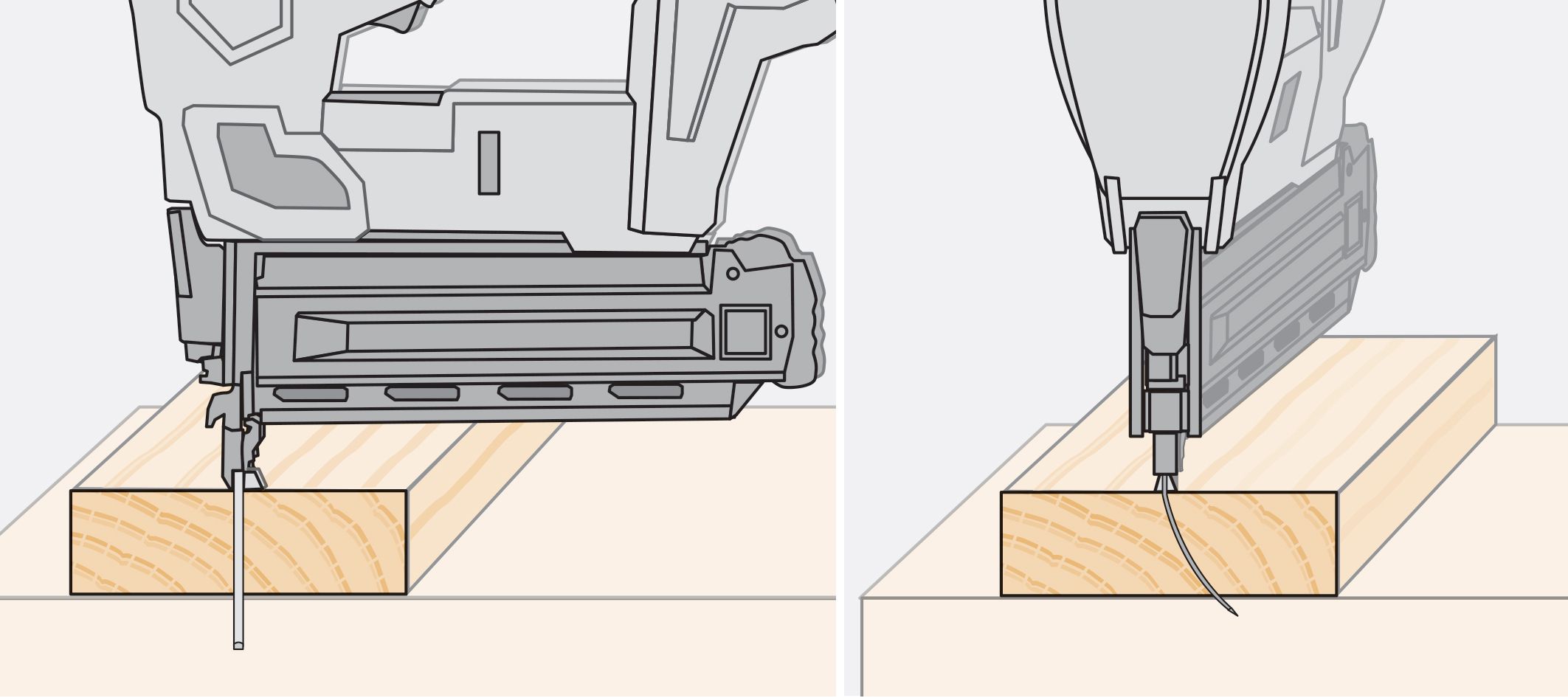Finish nailers are helpful tools for trimming windows and doors, hanging crown molding, and fastening delicate woodworking pieces. Cordless versions are especially convenient, offering the power and firing rate of their corded counterparts but on the go.
To help you build out your toolkit, our guide explores the different types of cordless finish nailers, their specific purposes, and essential safety tips.
Key Features of Cordless Finish Nailers
When selecting a cordless finish nailer, consider the following features:
- Weight: Lighter nailers are easier to maneuver, especially for overhead work or prolonged use.
- Battery life: Look for models that can fire hundreds, if not thousands, of nails on a single charge for maximum efficiency.
- Magazine capacity: A larger capacity means less frequent reloading, saving time during larger projects.
- Depth adjustment: This feature allows you to control how deep the nails are driven into the material, which is crucial for achieving a professional finish.
- Jam clearing mechanism: Easy access to clear nail jams can save time and frustration, especially on more demanding jobs.
Types of Cordless Finish Nailers
There are many types of cordless finish nailers to choose from. As This Old House carpenter Nathan Gilbert says, “When it comes to trimming windows, running base, hanging crown, or even a delicate woodworking project, one gun can’t do it all.”
Below, learn more about each finish nailer type so you can pick the right one for your project needs.
15-Gauge Finish Nailer

Best for: Heavy trim up to 5/4 inch thick
“The powerful pistons in these nailers can sink 2 1/2-inch nails into hardwood. Use them to securely install baseboards, large crown molding, and door and window casings,” explains Gilbert.
Their nails’ relatively large heads and shank size ensure that joints will stay tight. Its near-twin in both size and price is the 16-gauge finish nailer, which comes with either a straight or angled magazine (the latter comes in handy when working in tight spaces).
Metabo HPT Angled Finish Nailer Kit (NT1865DMAS)
- Weight: 7.5 pounds
- Nail lengths: 1 1/4–2 1/2 inches
- Battery: 18-volt, 3 amp-hour, lithium-ion
- Magazine capacity: 100 nails
- Nails per charge: 1,100
18-Gauge Brad Nailer

Best for: Wide range of trim thicknesses, 1/4 inch–1 inch
“These nailers hit the sweet spot between the big 15- and 16-gauge nailers and featherweight pin nailers,” says Gilbert. “This is the size to use for fastening quarter round, baseboard cap, wainscot, small crown, chair rails, and most other trim. Their nails don’t leave a large hole. One swipe of filler hides them for good.” However, keep in mind that they’re only available with straight magazines.
DeWalt 20V Max XR Brad Nailer Kit (DCN680D1)
- Weight: 6.3 pounds
- Nail lengths: 5/8–2 1/8 inches
- Battery: 120-volt, 2 amp-hour lithium-ion
- Magazine capacity: 110 nails
- Nails per charge: 850
23-Gauge Pin Nailer

Best for: 1/2-inch trim or thinner that will be glued
Gilbert says: “This type of nailer can shoot a wire nail just 0.023 inches wide into solid wood. These nails leave behind holes so tiny that you can hide them under a coat of paint. They’re good for attaching molding returns or thin trim on cabinets, bookcases, or small projects. Because pin nails don’t have heads, their holding power is limited. Use them to keep freshly glued pieces in place while the adhesive sets. They’re no match for some dense hardwoods.”
Ryobi ONE+ AirStrike Pin Nailer Kit (P318)
- Weight: 5.5 pounds
- Nail lengths: 1/2 to 13/8 inches
- Battery: 18-volt, 2 amp-hour, lithium-ion
- Magazine capacity: 120 nails
- Nails per charge: 3,500
Tips for Safely Using a Finish Nailer

Nailers fire with high speed and power, so they need to be handled with care. Follow these basic safety precautions every time you pick one up:
- Remove the battery when you adjust the tool or fix a jam. This prevents accidental firings.
- Keep hands away from the area being nailed or anywhere a nail could exit unexpectedly.
- Hold the nailer perpendicular to the work. Nails can ricochet off the wood if you angle the nailer or attempt to toenail with it.
- Before pulling the trigger, place the nailer’s nose firmly against the surface. That way, the nail is more likely to sink to the proper depth, with the nailhead just below the wood surface.
Before you begin, make sure that the battery is fully charged, the magazine is filled with nails of the correct length, and you’re wearing safety glasses and hearing protection.
The Difference Between Finish Nailers Is the Nail Size

There are several types of finish nailers, each categorized by the size of the fastener they fire. The fastener sizes come in gauges, and the lower the gauge number, the larger or thicker the fastener.
- 15-gauge nails are large and offer a lot of holding power. They’re extremely effective for running base molding or hanging crown molding, but they do leave larger holes in the moldings.
- 16-gauge nails are still large and offer a lot of holding power, but they’re a bit more versatile than 15-gauge. These nails are great for trimming doors and other general carpentry tasks.
- 18-gauge nails are smaller and thinner, and they have smaller heads than 15- or 16-gauge nails. This makes them useful for fastening small moldings or nailing the side of a molding to a window or door jamb.
- 23-gauge nailers, or pin nailers, fire small headless pins. While they don’t offer much holding power, they’re helpful for delicate moldings, woodworking pieces, or mitered returns on window aprons and moldings. They’re often used with glue.
Choosing the Right Nail Size for Your Finish Nailer
Effective and safe fastening requires choosing the right nail size. Use these guidelines to determine the best size for your project:
- Penetration: Nails should penetrate the framing by at least 3/4 inch, with 1 inch being preferable for maximum holding power.
- Baseboard over drywall: For 3/4-inch-thick baseboard over 1/2-inch drywall, use 2- or 2 1/2-inch nails to ensure firm attachment.
- Hitting hidden wires or pipes: Longer nails provide more holding power but increase the risk of hitting hidden wires or pipes within walls.
- Gauge strength: Larger gauge nails offer greater strength but may split wood and leave larger holes, which could be visible and require more filler.
By choosing the correct nail size, you’ll ensure that your projects are both sturdy and maintain the integrity of the woodwork.
Pneumatic vs. Battery-Powered Nailers
Both pneumatic and battery-powered nailers have advantages and disadvantages.
Pneumatic Nailers
Pros:
- Lighter weight, making them easier to handle during long projects
- Consistent power output, providing reliable performance on various materials
- Lower initial cost
Cons:
- Requires an air compressor and hose, making them less portable
- Needs more maintenance to keep the compressor and hose in good working condition
Battery-Powered Nailers
Pros:
- Highly portable, offering great flexibility and convenience for jobs in different locations
- No compressor or hose needed, making them faster and easier to set up and use
- Less maintenance required compared to pneumatic models, saving time on upkeep
Cons:
- Heavier than pneumatic models, which can lead to fatigue during extended use
- Higher initial cost, though this can be offset by the convenience they offer
- Battery life limitations, requiring you to keep spare batteries handy for larger projects
Tips for Effective Nailing Using a Cordless Finish Nailer
To ensure the best results when using your cordless finish nailer, follow these tips:
- Align the nailer’s magazine perpendicular to the wood grain to prevent blowouts and ensure a clean finish.
- Use a nail set to countersink any proud nails after firing, creating a smooth surface for finishing.
- Pre-drill holes when working with hardwoods or near the edges of boards to prevent splitting and ensure precise nail placement.
- Clean and lubricate your nailer regularly according to the manufacturer’s instructions to maintain optimal performance.
- Keep spare batteries charged and ready for larger projects to avoid interruptions.
Our Conclusion
Cordless finish nailers have revolutionized trim work and fine carpentry by offering the power of pneumatic tools with the convenience of cordless operation. Understanding the different types available and following proper safety and usage guidelines can significantly improve the quality and efficiency of your home improvement projects.
